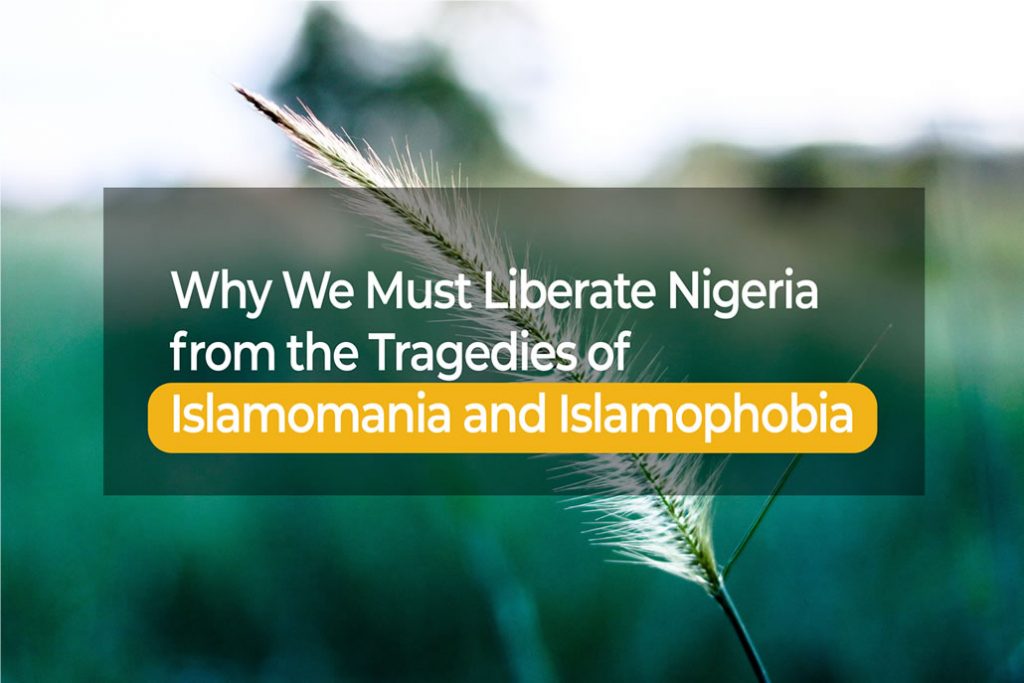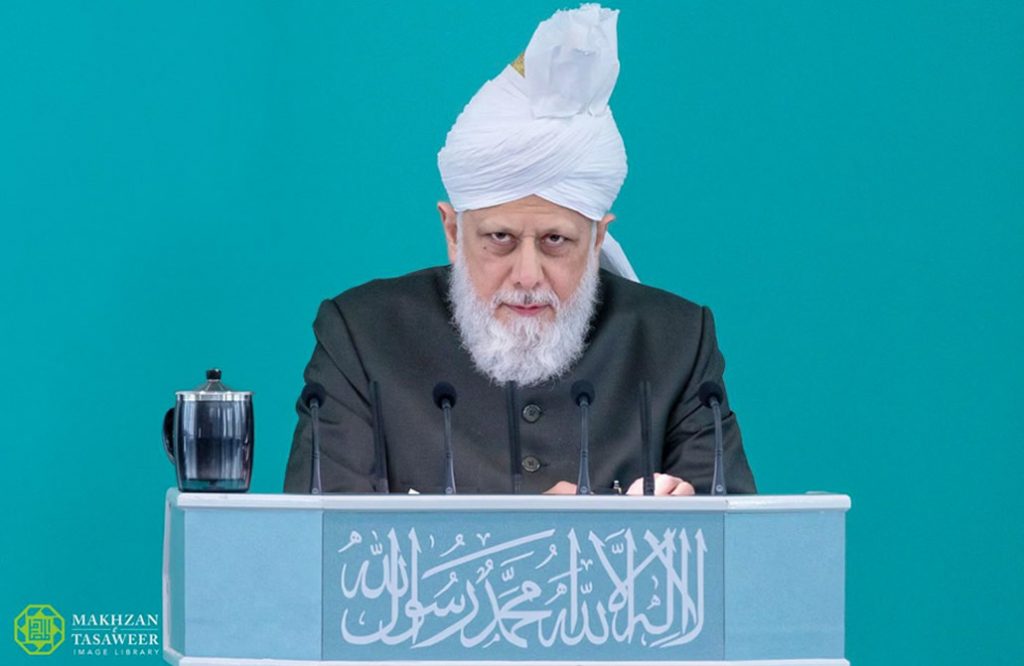As current affairs in Nigeria show, there is no doubt that the state of the nation is at a critical crossroads. From the lingering challenges of state and human security to the persisting issues of political economy, the rising uproar about alleged regional marginalization and the call for restructuring for a true federalism, the crises of electoral politics, the spate of corruption, unemployment and poverty, and the conflict of ethnic and religious identity and expression etc., Nigeria is presently facing challenges that are combining to threaten and bedevil the corporate political, economic, social and religious existence of the country and her citizens. Without underestimating the criticality of each of the aforementioned myriads of challenges, this piece focuses on addressing what it views as the tragedies of religion in Nigeria – the monsters of Islamomania and Islamophobia – which have been eating deeply into and dividing and destroying the fabrics of the individual and corporate existence of Nigerians. Of course, the primacy of addressing religious issues in Nigeria should be easily informed by the fact of the centrality of religion in every ramification of the personal and corporate existence of Nigerians, and particularly, the divisive and destructive impacts religious crises have always had upon the country. In his Ethno‐religious Identity and Conflict in Northern Nigeria (2010), Eyene Okpanachi, making reference to Smyth and Robinson (2001), opined that “Nigeria is usually characterized as a deeply divided state in which major political issues are vigorously and or violently contested along the lines of the complex ethnic, religious, and regional divisions in the country.” This is understandable. For, as a December 18, 2012 report conducted by Pew Research Centre shows, 97.2% of the population of Nigeria is under the grip of religion. More instructive is I. Enwerem’s assertion in his 1995’s A Dangerous Awakening – The Politicization of Religion in Nigeria (published by IFRA, Ibadan) that, “religion has always been important in Nigeria and in Nigerian politics.” In fact, Paden J. once aptly declared in his Faith and Politics in Nigeria (2008) that, “the intensity of religious identity in Nigeria is regarded as one of the highest in the world.” Evidently, Paden’s claim is supported by the fact that as Eyene Okpanachi again opined, “Nigerians are more likely to define themselves in terms of religion than any other identity. Indeed, according to the authoritative May-June 2006 survey conducted by the Pew Forum on “Religion and Public Life”, 76% of Christians say that religion is more important to them than their identity as Africans, Nigerians or members of an ethnic group. Among Muslims, the number naming religion as the most important factor is even higher (91%).” Proceeding with the thrust of this piece, in simple terms, this writer views Islamomania as expressive of the psychological state of the narrow-minded, hardliner, extremist Islamists who digest Islam like opium with an unbridled poise to express and preach the religion or introduce and enforce its Sharia Law upon others in a rather radical, fanatical, coercive and do-or-die manner. On the other hand, Islamophobia connotes non-Muslims’, particularly Christians, irrational and unfounded fear of, prejudice against and hatred for Islam and Muslims. Apparently, the twain phenomena represent aberrant psycho-social complexities that have become deeply rooted in the psychological perception and empirical expression of or reaction against Islam by some elements in Nigeria over the decades, with an increasing proportion in recent times. Evidently, as both the past and ongoing trends have shown, whether it was the Muslims’ Maitatsine crisis that resulted in over 2,000 loss of life in the 1980s, the bloody crises of Sharia introduction that trailed Nigeria’s return to democratic dispensation in 1999, the menace of Boko Haram insurgency that has claimed the lives of tens of thousands and internally displaced over two million Nigerians, the instances of angry outbursts, and sometimes violent reactions, against the legitimacy of the Nigerian secular, democratic system and constitution by some extremist Muslim individuals and groups, or the various cases of intra-religious theological and ideological skirmishes among Muslim individuals, sects and denominations in the country, Islam has been an object of Islamomaniac expressions in the hands of some so-called Muslim elements. While these developments may be attributed to gross misconception and misinterpretation of Islamic Scripture, Prophetic traditions and early historical events on the part of such individuals or groups, there is no doubt that they constitute sheer misrepresentation and, in fact, an immense disservice to the image of Islam. Similarly, from the side of the non-Muslims, it is apparent that whether it is the Christians’ incessant cases of prejudice against and hullabaloos over Muslim women hijab dress, the uproar over the introduction of Islamic banking system, the entrenched instances of prejudicial stereotyping of Muslims, or the recently increasing outbursts alleging an Islamization of Nigeria agenda, in reaction to various cases of political appointments by the government of the day or its participation in the Organization of Islamic Cooperation summit or the menace of herdsmen banditry, etc., Islam has continued to be a victim of Islamophobic perceptions and reactions by non-Muslim Nigerians. Disturbingly, these phenomena (in a country where unholy romance between religion and politics has seen constant politicization of religion and religionization of political issues) have not only continued to heat up the Nigerian socio-religious space but are increasingly turning the country into a hotbed of catastrophic intra/inter-religious and socio-political suspicion, mistrust, clashes and commotions, resulting in the threat against national solidarity, coherence and unity of the country as well as socio-political and religious peace, harmony and security of life and the State. Expediently, with the deepening inter-religious suspicion and mistrust and the rising socio-religious and political tensions in the country, if we must reconstruct Muslims’ expression of, and non-Muslims’ reaction to, Islam as a socio-political and religious ideology; if the Nigerian government and people are genuinely desirous of uniting the various religions and ethnicities under a harmonious socio-religious co-existence; and if the government must ensure the security of the state and its people and save human lives from carnage, public infrastructure from destruction and Nigeria’s political solidarity and sovereignty from collapse, then the issues of











